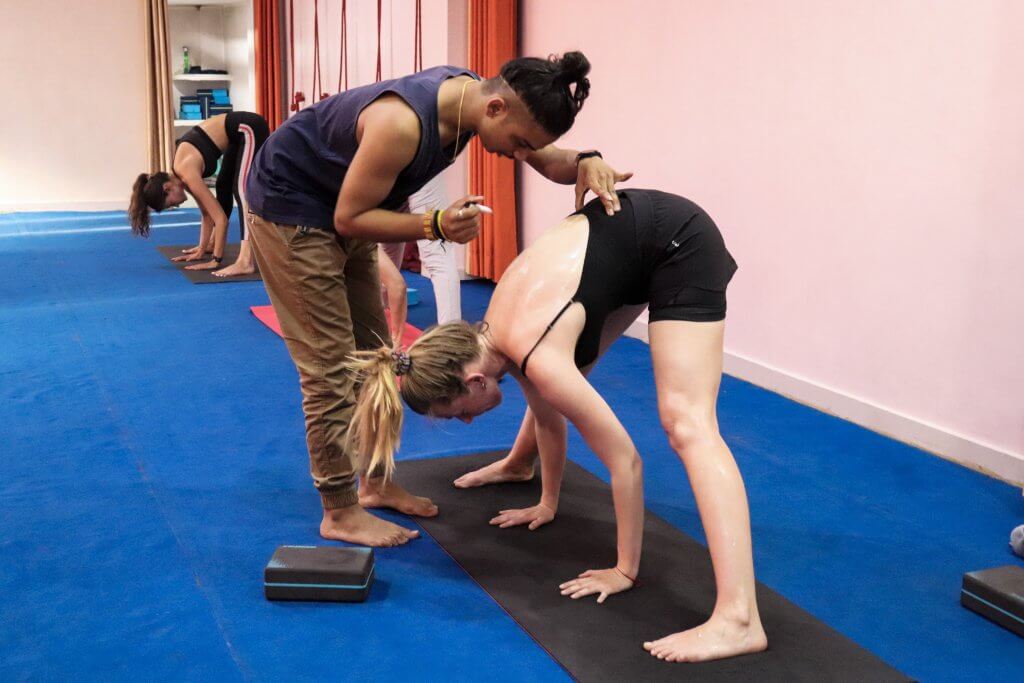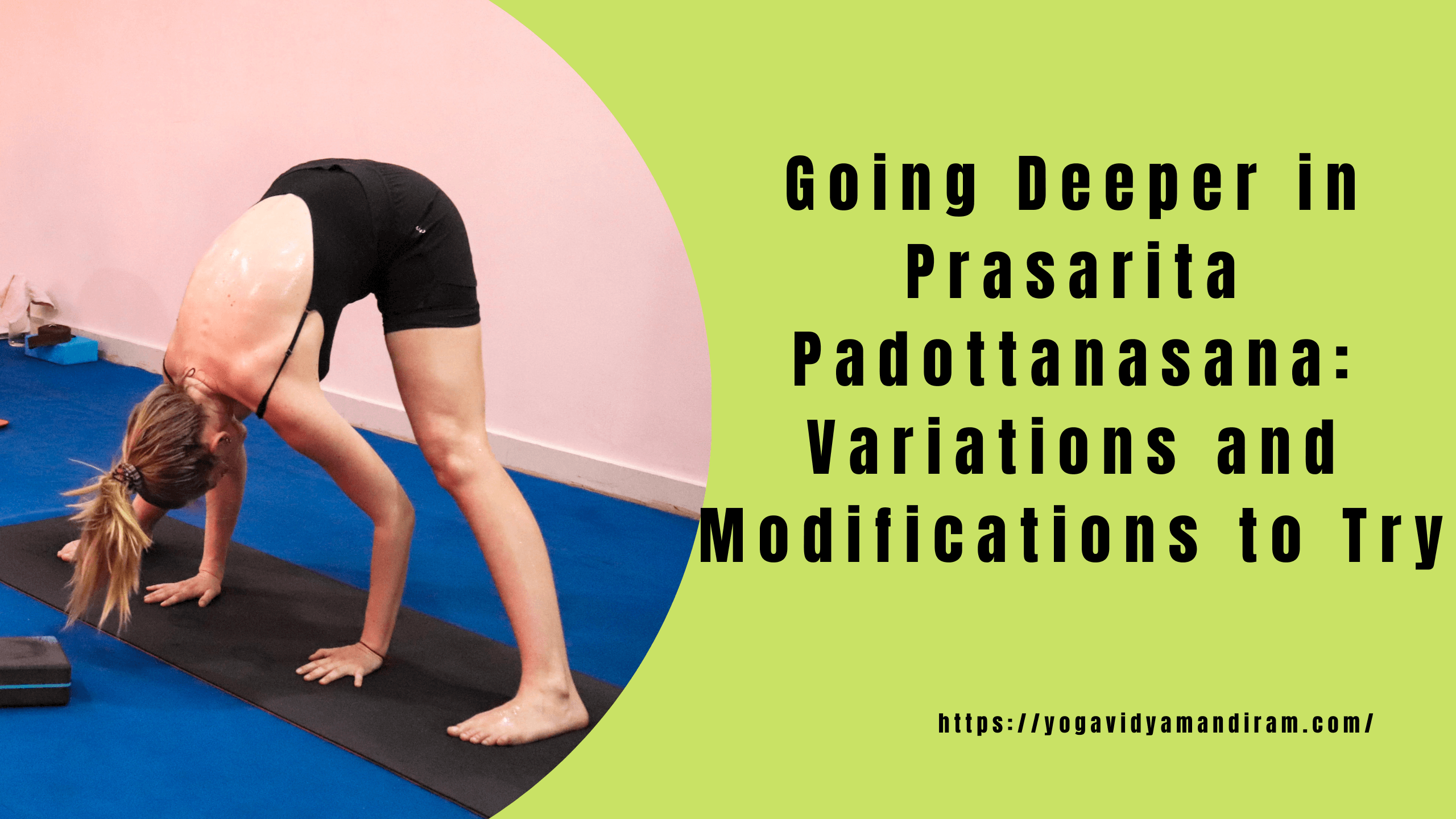Are you looking to take your yoga practice to the next level? If so, then Prasarita Padottanasana is a great place to start! This pose offers numerous benefits for your body and mind, including improved flexibility, strength, and balance. However, simply doing the basic version of this pose may not be enough for some yogis. That’s why we’re here to introduce you to a variety of variations and modifications that can help you go deeper into Prasarita Padottanasana. Whether you’re a beginner or an advanced practitioner, these techniques will challenge and inspire you on your yoga journey. So don’t wait any longer – let’s get started!
Introduction to Prasarita Padottanasana
Prasarita Padottanasana, or Wide-Legged Forward Fold, is a restorative yoga pose that offers a deep stretch to the hamstrings, hips, and inner thighs. This pose can be performed with the hands on the floor or in prayer position. It’s important to keep the spine long and the abdominal muscles engaged in this pose to avoid rounding of the back.
To enter Prasarita Padottanasana, begin in Tadasana (Mountain Pose). Step your feet wide apart, about four to five feet. Turn your toes out slightly and place your hands on your hips. Inhale and lengthen your spine. As you exhale, fold forward from the hip joints, keeping your spine long. If you can’t reach the floor with your hands, place them on blocks or a blanket rolled up tightly.
Once you’re in the forward fold, press evenly into both feet and lift through the groin area so that you don’t collapse into your lower back. To deepen the stretch, walk your hands out in front of you until they’re parallel with your feet. You can also bring your palms together in prayer position if that feels more comfortable for you. Hold here for five to eight breaths before releasing back to Tadasana.

Benefits of Prasarita Padottanasana
There are many benefits to practicing Prasarita Padottanasana, including improving balance and flexibility, strengthening the legs and core muscles, and reducing stress and anxiety. This pose can also help to improve digestion and relieve pain in the lower back and shoulders.
Challenges of Prasarita Padottanasana
Prasarita Padottanasana, or Wide-Legged Forward Fold, is a restorative yoga pose that can be challenging for beginners. The key to mastering this pose is to keep the spine long and the hips square. Here are some common challenges you may encounter when practicing this pose:
1. Tight hamstrings: If your hamstrings are tight, it will be difficult to keep your spine long. Try sitting on a folded blanket or block to raise your hips and lengthen your hamstrings.
2. Rounded back: It’s easy to round your back in this pose, which can lead to back pain. Be sure to keep your spine straight and your abdominal muscles engaged to protect your lower back.
3. Sinking hips: As you fold forward, it’s natural for your hips to sink down toward the floor. But this can put strain on your lower back, so be sure to keep them square and lifted throughout the pose.
Modifications for Beginners
If you’re new to Prasarita Padottanasana, or just looking for some modifications to make the pose more accessible, here are a few options to try.
First, if you have any wrist pain, you can place your hands on blocks instead of the floor. This will help to take some of the weight off of your wrists and allow you to keep your palms flat.
If you have tightness in your hamstrings, you can bend your knees slightly to help lengthen them. You can also place a block underneath your pelvis if you feel like you need some support in that area.
And finally, if you’re struggling to keep your balance, you can practice the pose with one leg lifted off the ground. This will help build up strength in your legs and core and eventually make it easier to stay balanced on both legs.
Variations for Advanced Practitioners
There are many variations of Prasarita Padottanasana for advanced practitioners to try. One variation is to place your hands on your hips instead of holding onto your feet. Another is to bring your head all the way to the floor between your legs. You can also try placing your hands in prayer position at your heart, or reaching up overhead. For a more challenging pose, try bringing one leg straight up into the air and catching it with your hands.
Sequencing Considerations
When you practice Prasarita Padottanasana, it’s important to be aware of the sequencing of the pose. In particular, you need to be careful not to rush through the posture and to ensure that you are properly aligned before moving into the deeper variations of the pose. Here are some things to keep in mind when sequencing your Prasarita Padottanasana practice:
1. Start by standing with your feet hip-width apart and your hands on your hips.
2. Take a deep breath in and as you exhale, step your feet wide apart. Make sure that your feet are parallel to each other and that your ankles are directly below your wrists.
3. Take another deep breath in and as you exhale, bend forward from your hips, keeping your spine long and straight. If you can’t reach the floor with your hands, place them on blocks or use a strap around your ankles.
4. Hold this position for several breaths, then slowly start to walk your hands back toward your feet, keeping your spine straight. Once you reach your feet, press down into the balls of both feet and lift up through the crown of your head to come back into standing tall.
Conclusion
Prasarita Padottanasana is a great pose for stretching the body and focusing on breath. With its various variations, it can be adapted to any level of practitioner, from beginner to advanced. Whether you’re looking for some extra intensity or just want to challenge yourself with different poses, these variations and modifications will help you find new ways to explore your practice. So don’t be afraid to go deeper in Prasarita Padottanasana—you’ll never know what new discoveries await!



Leave a Reply